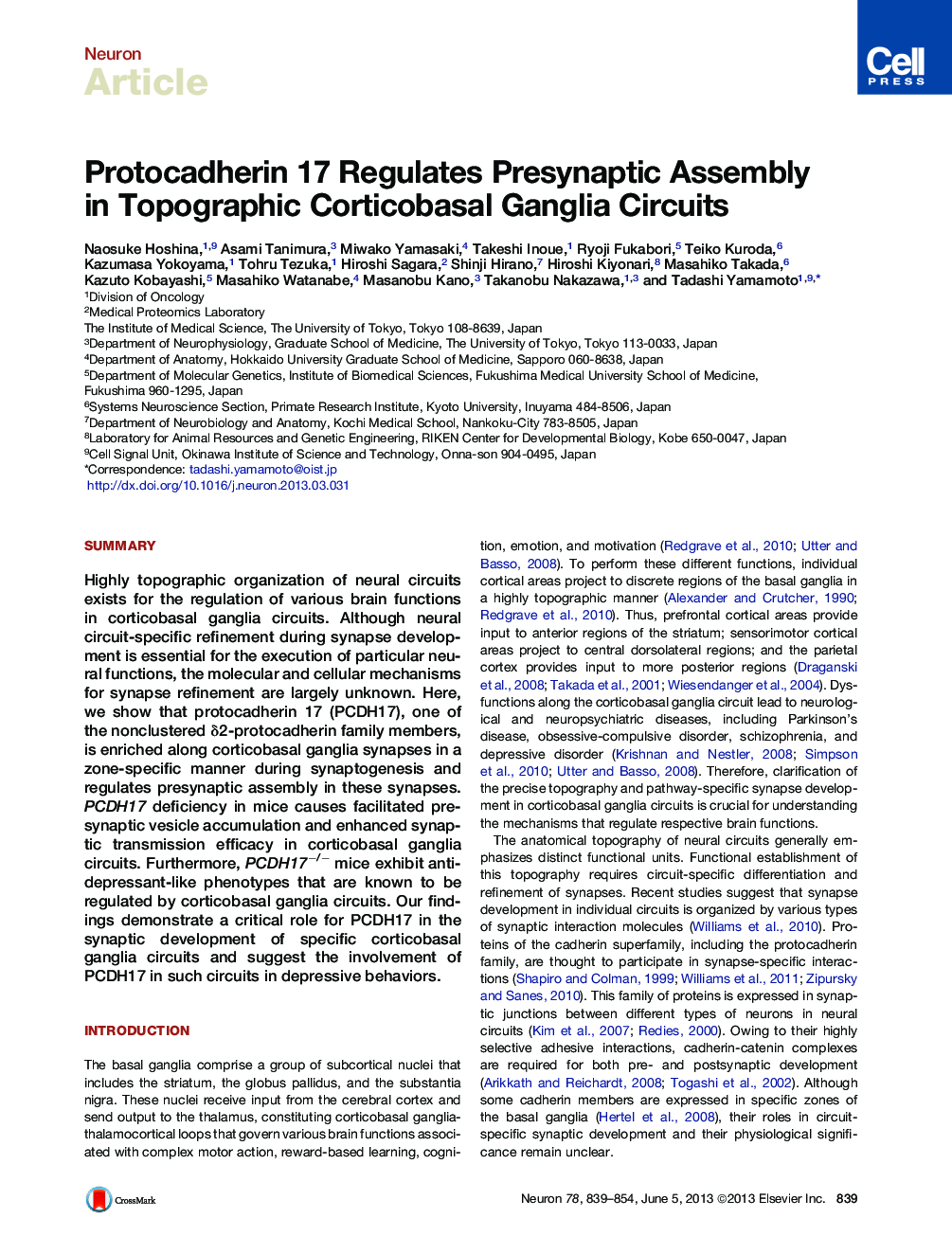| Article ID | Journal | Published Year | Pages | File Type |
|---|---|---|---|---|
| 4321344 | Neuron | 2013 | 16 Pages |
•PCDH17 is topographically expressed in corticobasal ganglia circuits•PCDH17 homophilically interacts at perisynaptic sites in basal ganglia•PCDH17 regulates presynaptic vesicle assembly and synaptic transmission efficacy•PCDH17 deficiency induces mice to display antidepressant-like behaviors
SummaryHighly topographic organization of neural circuits exists for the regulation of various brain functions in corticobasal ganglia circuits. Although neural circuit-specific refinement during synapse development is essential for the execution of particular neural functions, the molecular and cellular mechanisms for synapse refinement are largely unknown. Here, we show that protocadherin 17 (PCDH17), one of the nonclustered δ2-protocadherin family members, is enriched along corticobasal ganglia synapses in a zone-specific manner during synaptogenesis and regulates presynaptic assembly in these synapses. PCDH17 deficiency in mice causes facilitated presynaptic vesicle accumulation and enhanced synaptic transmission efficacy in corticobasal ganglia circuits. Furthermore, PCDH17−/− mice exhibit antidepressant-like phenotypes that are known to be regulated by corticobasal ganglia circuits. Our findings demonstrate a critical role for PCDH17 in the synaptic development of specific corticobasal ganglia circuits and suggest the involvement of PCDH17 in such circuits in depressive behaviors.
